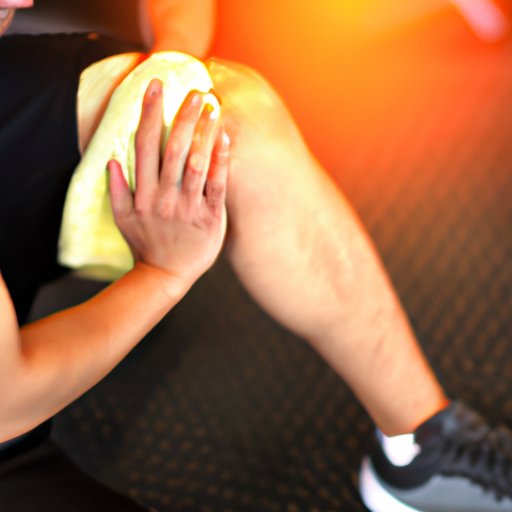Introduction
Are you someone who loves to hit the gym or go for a run, only to feel sore and stiff a day or two later? If so, you’re not alone. Post-workout soreness or muscle soreness is a common occurrence for exercise enthusiasts, especially for those who are new to a particular exercise or those who have increased the intensity or duration of their workout. In this article, we will dive into what causes post-workout soreness, how to manage it effectively, and how to differentiate it from injury.
The Science Behind Post-Workout Soreness: Why It Happens and How to Prevent It
The primary cause of post-workout soreness is microscopic damage that occurs in your muscle fibers during exercise. This damage creates tiny tears in your muscles, which cause inflammation and pain as your body attempts to repair the tissue. A key to preventing post-workout muscle soreness is to start any physical activity gradually, and not to push yourself too hard too soon. It’s also essential to stretch before and after every workout and to take adequate rest and recovery time between each session.
Transforming Pain into Gain: Understanding the Benefits of Soreness After Exercise
Although post-workout soreness can be uncomfortable, it’s also essential to recognize the positive benefits of muscle soreness. Muscle soreness signifies that your muscles are adapting and growing stronger after each workout. Additionally, soreness indications that your muscles are growing and that you are effectively stimulating them with your workout. It’s important to push past this discomfort by starting with low intensity and gradually increasing the volume of exercises.
Sore Today, Strong Tomorrow: Examining the Role of Muscle Damage in Exercise Adaptation
Muscle damage is a crucial component of building strength and muscle mass. Whenever you work out, your muscles experience a considerable amount of stress, which leads to microscopic tears. During recovery, these tears are repaired, resulting in increased muscle size, strength, and endurance. The role of post-workout recovery is vital, though, in ensuring that this repair process continues in a healthy manner, and proper nutrition is essential, including an adequate amount of protein, carbs, vitamins, and minerals to support muscle recovery.
Pushing Past the Pain: Strategies for Alleviating Post-Workout Soreness
While muscle soreness is a natural part of exercise, and while it’s good to feel discomfort, it’s also important to manage it effectively. Some strategies for managing post-workout soreness may include gentle exercise, such as walking or yoga to help increase blood circulation to the muscles, hot and cold therapy, and massages. Proper hydration and nutrition are also critical factors in the recovery and repair process.
When Soreness Signals Injury: Recognizing the Difference Between Normal and Excessive Pain
It is important to realize that there is a significant distinction between post-workout soreness or discomfort and pain that is the result of an injury. Pain that is too sharp or consistent may indicate a more severe injury, such as a strain, sprain, or even fracture. When noticing an injury, it is crucial to take immediate rest, apply ice to the affected area and receive medical attention if necessary.
Soreness, Stretching, and Supplements: The Most Effective Ways to Relieve Muscle Discomfort After Exertion
Post-workout recovery techniques such as stretching, foam rolling, and certain supplements can provide significant relief from soreness and aid in the recovery process. Stretching before and after any workout can stretch the muscles thoroughly and decrease the risk of injury. Supplements like protein powder, BCAAs, turmeric and omega-3 fatty acids also play a vital role in the body’s recovery efforts following a workout. Incorporating high protein foods or protein powders, and natural anti-inflammatory foods such as fruits and veggies is also important on the way to a quick recovery, learning to nourish your body in optimal ways.
Conclusion
In conclusion, post-workout soreness can be a sign of effective workout results, more so, a reminder that your hard work is turning into positive results. It is crucial to realize that muscle soreness is a natural progression and that it is essential to take the appropriate steps to manage it effectively to ensure proper recovery and growth. By adopting proper techniques such as stretching, hydrating, nutrition, and anti-inflammatory supplementation, you can minimize the discomfort and come back stronger and more focused on your fitness goals than ever before. Remember, it is always better to focus on long-term results than short-term gains.
(Note: Is this article not meeting your expectations? Do you have knowledge or insights to share? Unlock new opportunities and expand your reach by joining our authors team. Click Registration to join us and share your expertise with our readers.)
